[Note: posts are better read and pictures are better viewed on a web browser… click on the green button above or the title of the post.]
Hello pals!
I'm excited to share the first part of our trip on the big island of Borneo! This post includes a lot of photos and videos, particularly of wildlife. I hope that y’all enjoy the read!
For those who may not be aware, Borneo is the world's 3rd largest island (after Greenland and New Guinea). It is also the only island in the world that is shared by three countries – Indonesia, Malaysia, and Brunei.
The Malaysian part of Borneo is spread out along the northern third of the island and comprises of two states, Sabah and Sarawak, each of which have populations of about 3.4 million and 2.5 million people respectively.
For the purposes of this blog, I'll be focusing on Sabah, which is where we spent two weeks exploring cities, rushing rivers, and lush rainforests.
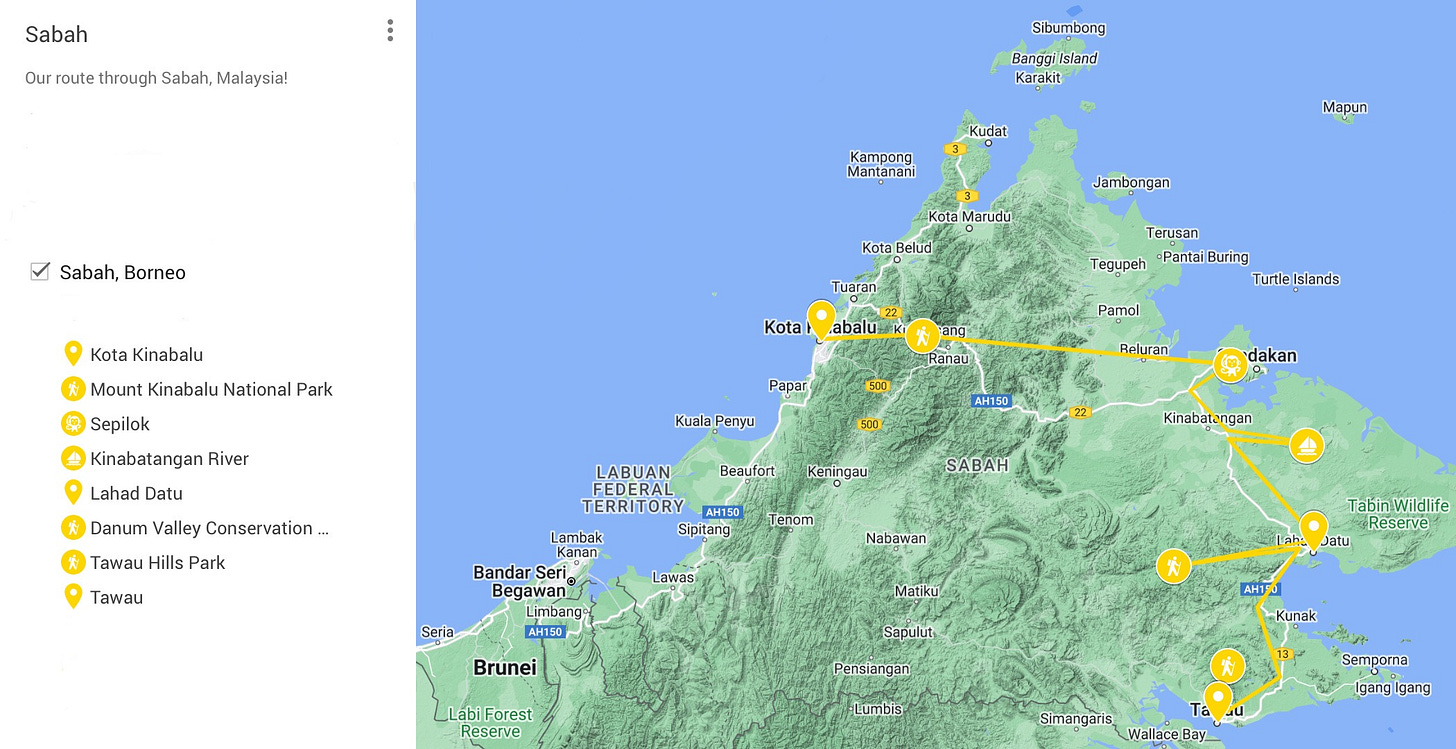
For me, it is Sabah's nature in particular that truly makes it a place apart from everywhere else, and I'm excited to share with you why I feel that way! But before we delve into flora and fauna, it'd only be appropriate for me to share some information I learned about the people who call Sabah home.
Sabahans and their cities
Our first stop in Borneo was Sabah's state capital of Kota Kinabalu. As timing would have it, we arrived at the start of Lunar (Chinese) New Year, which meant that there were many tourists around the city as this was the start of a two-week holiday break. The city was festive for the occasion, with plenty of red and gold paper lanterns, garlands and banners strewn about the streets and storefronts. There were fireworks and firecrackers going off at night and Chinese folklore performances taking place on the streets and in shopping malls. Our guide on our free city walking tour even gifted us one of those red and gold envelopes ubiquitous with Chinese New Year containing a 1 Malaysian Ringgit note (roughly 1/3 of a loonie). Shouldn’t it be us paying for the tour, not the other way around?
I was surprised to see pretty much everyone, Chinese or not, taking part in the Chinese New Year festivities, leaving me wondering more about Sabah’s ethnic make-up. I learned that the ethnic Chinese population in Sabah have a long history, with many having arrived as immigrants from southern China in the 19th century. Today, ethnic Chinese make up approximately 10% of Sabah's population (~275 000 of 3.4 million), with significant communities found in urban areas like Kota Kinabalu. This makes Chinese the largest non-indigenous ethnic group in Sabah (and in Malaysia as a whole for that matter).
However, the Chinese are certainly not the only ethnic group in Sabah. In fact, there are 33 different ethnic groups with their own language, histories, culture and beliefs that call Sabah home. Although Malay is the primary language of eduction, followed by English, we learned that many Sabahans often speak another language whether that be an indigenous language or Mandarin.
We learned a bit more about one of these ethnic groups when visiting the little city of Lahad Datu on Sabah’s east coast. Shannon and I braved the hot sticky weather and explored the city by foot. While navigating the streets, we noticed on Google Maps’ satellite view that a large chunk of the city seemed to be located on water (i.e. the ocean). We were curious about this and decided to check it out. It turned out to be a whole neighborhood built on stilts, which is primarily inhabited by an ethnic group called the Bajau who are known for their maritime connection.
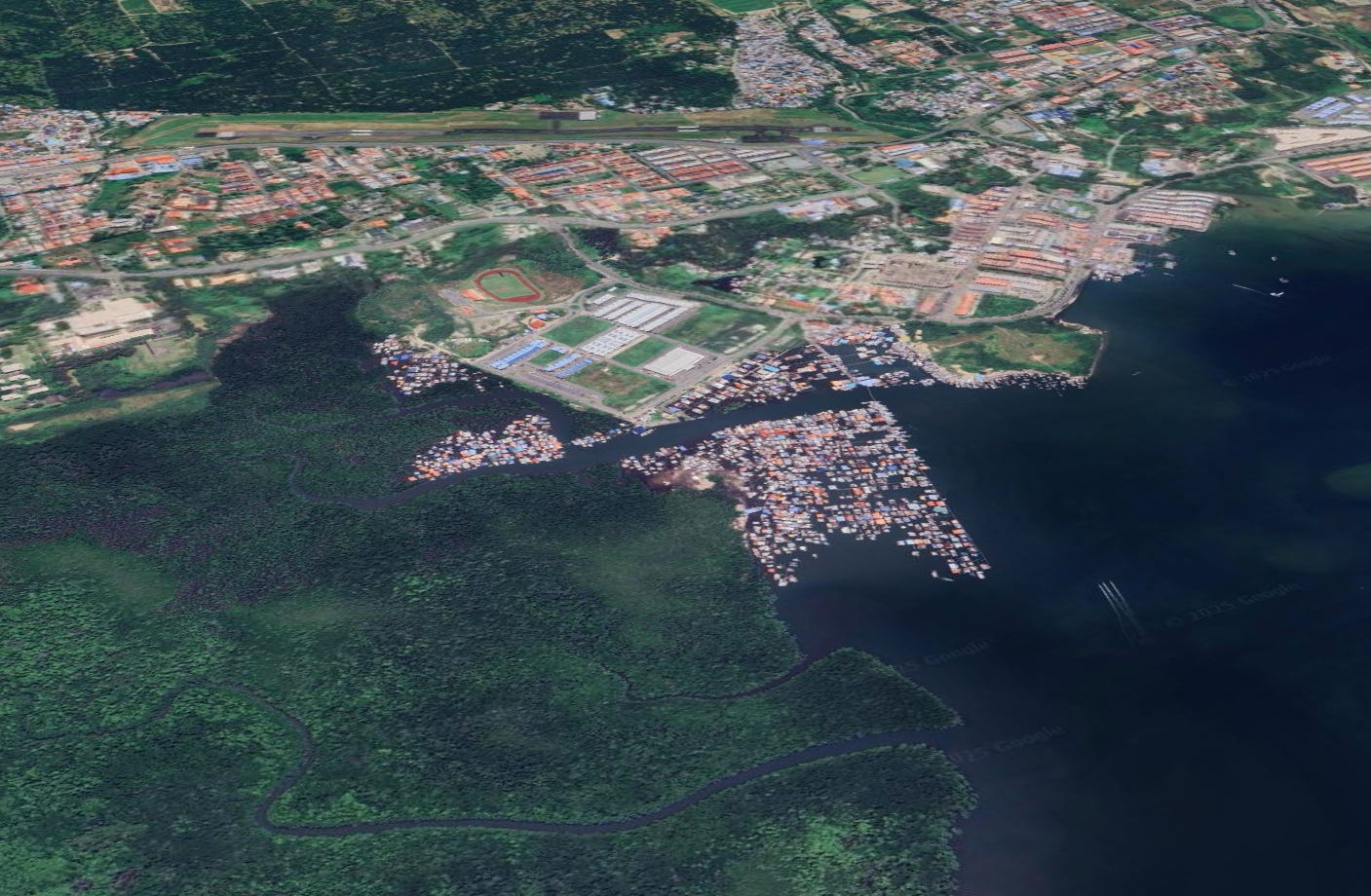
Historically, and to some extent currently, the Bajau have lived on boats or in stilt villages along the coast and have relied heavily on fishing. When Malaysia, the Philippines and Indonesia began to formalize statehood in the mid-20th century, the nomadic seafaring Bajau became somewhat of an overlooked/forgotten people since they were not really tied to any land. As a result, many Bajau became stateless and for some, that status persists today.
The Bajau’s lack of citizenship is something that Malaysia and neighbouring countries continue to address; however, most of the news stories that I found seemed to focus on their deportation rather than their integration. This is not to say that every person living in the stilt neighbourhood is stateless but from the limited research that I’ve done and from what I observed while walking along the uneven, rickety boardwalks of the stilt neighbourhood, it is apparent that the Bajau lack access to the same safe and reliable infrastructure and services that a typical Sabahan would find on the mainland.
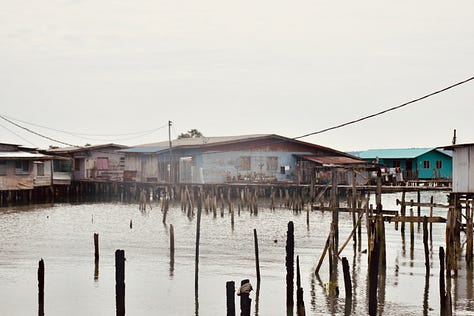
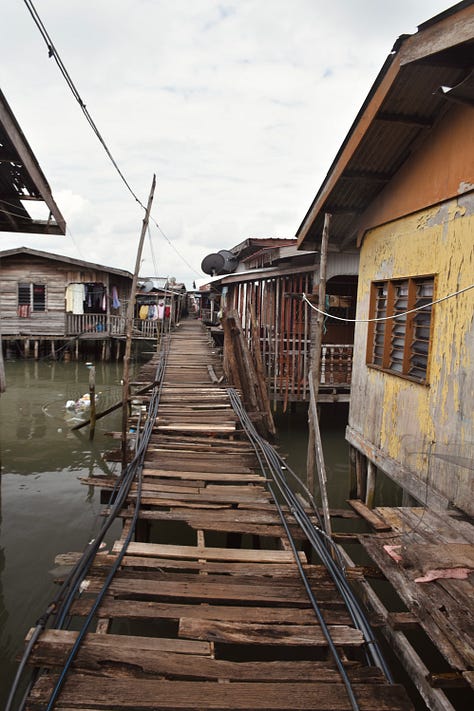
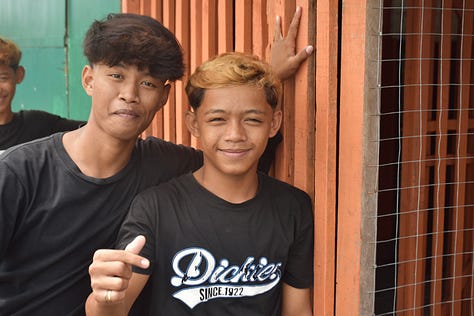

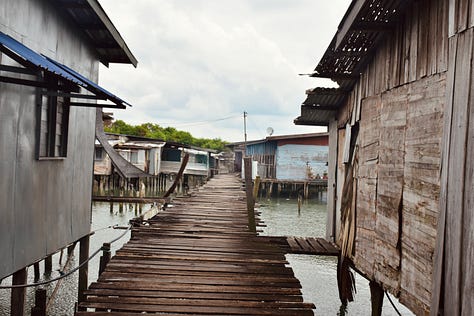
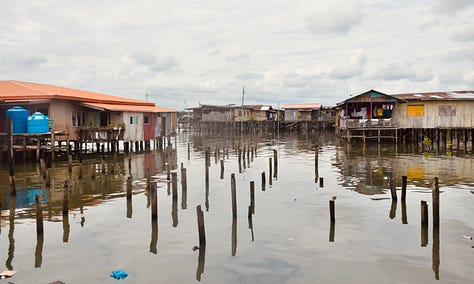
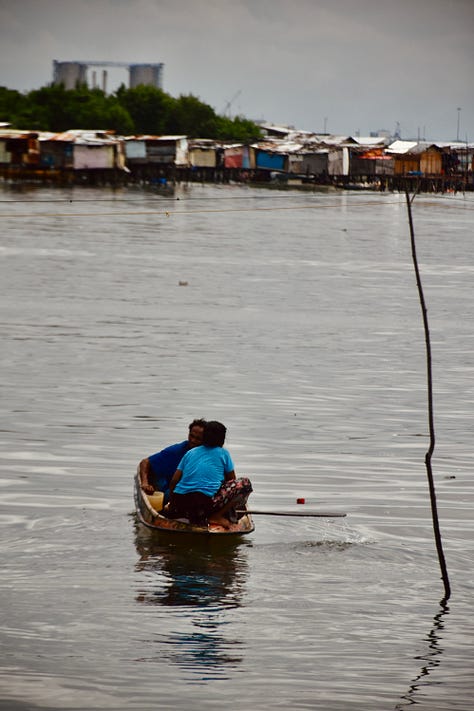
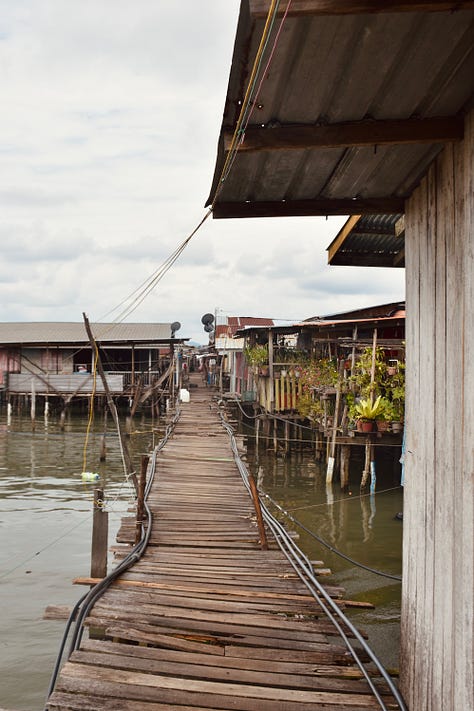
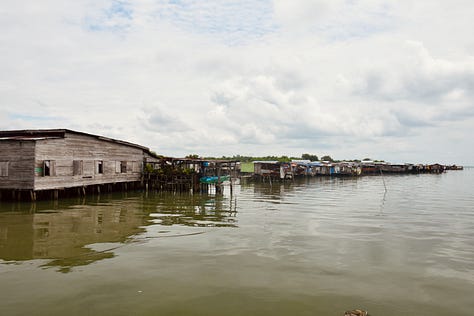
Trekking through rainforests
For this part of our Big Trip, Shannon and I made a point of getting into the rainforest as much as we could. We wanted to not only search for neat wildlife but to experience the formidable, bountiful and biodiverse environment that is unfamiliar to us Canadians. Needless to say, the rainforests we visited are quite the contrast from the ever-expansive tundra of Nunavut!
The first thing that hit me was the humidity. Never have I experienced such humidity! “Muggy” simply does not capture the experience of trekking through the rainforests of Borneo (during the wet season no less!). The humidity in the rainforest is inescapable and envelopes everything with a heavy, stifling moisture, leaving you totally drenched in a matter of minutes. As you’re hiking, you look down at the boggy ground and a dozen beads of sweat free-fall from your brow and splash into the muddy puddles beside your muddy boots. It's not very pleasant but there's no escaping it and eventually you just get used to being wet all the time….
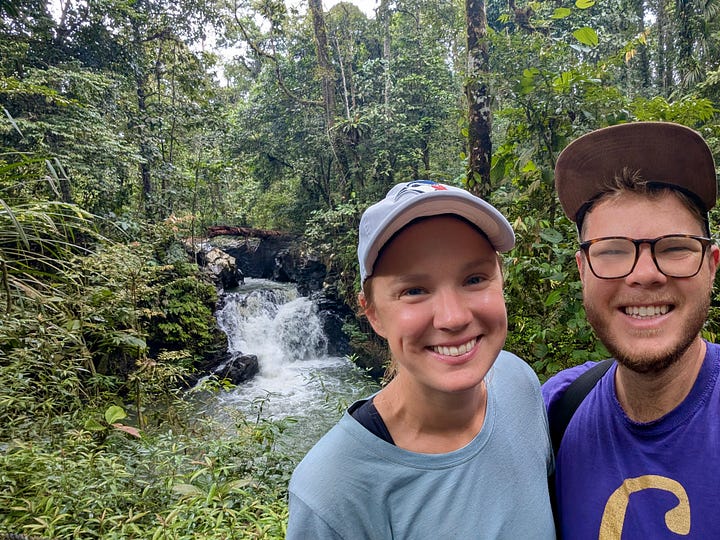
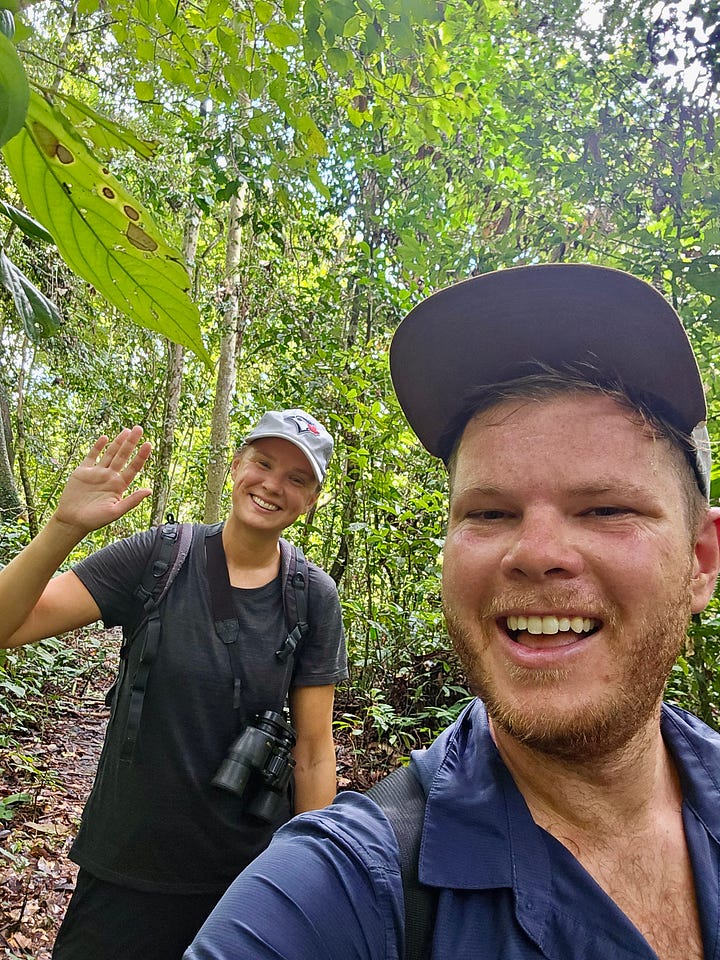
The first time we entered the rainforest, I was struck by just how dense and verdant it was. It seemed like every tree and vine were trying to outgrow each other to get unobstructed access to the sunshine above. We had many opportunities to walk along the forest floor and we also got to view the forest from above while walking along a canopy walkway in Mount Kinabalu National Park.
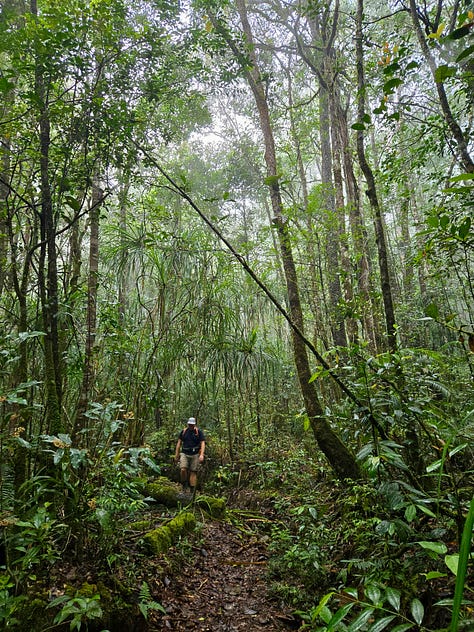
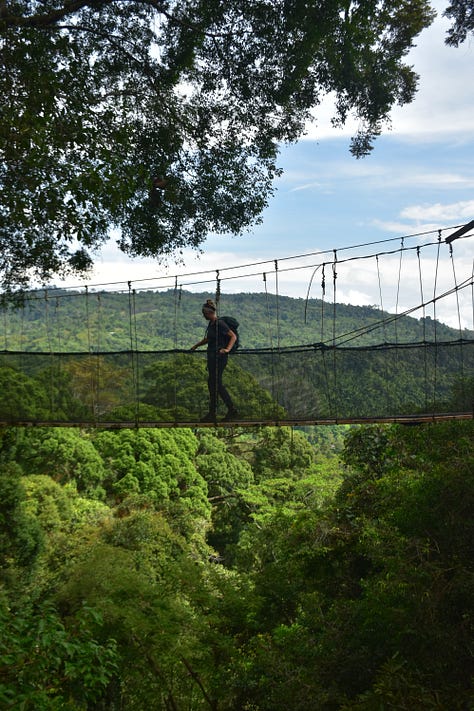
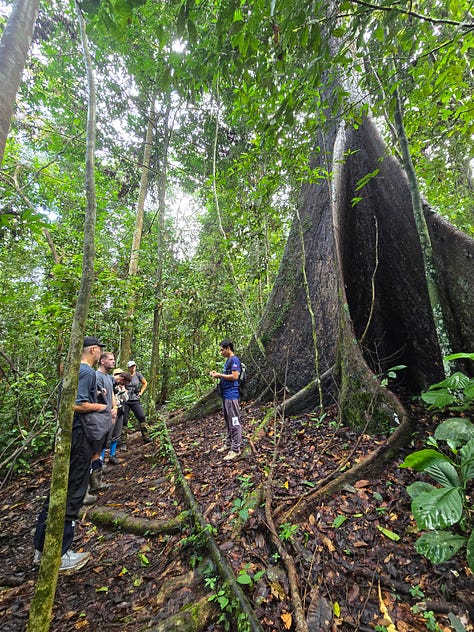
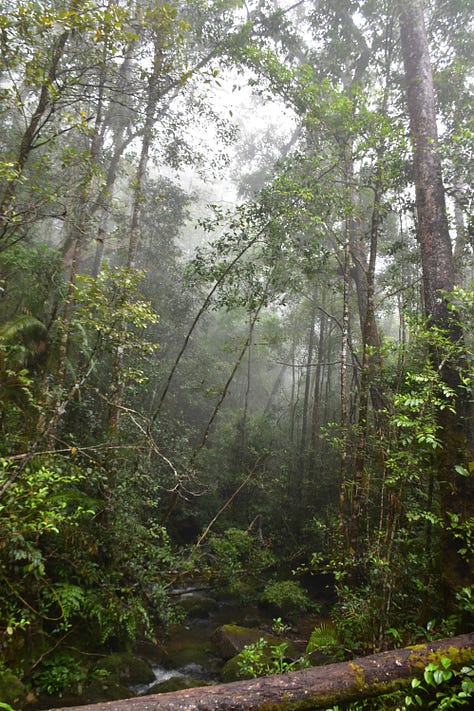
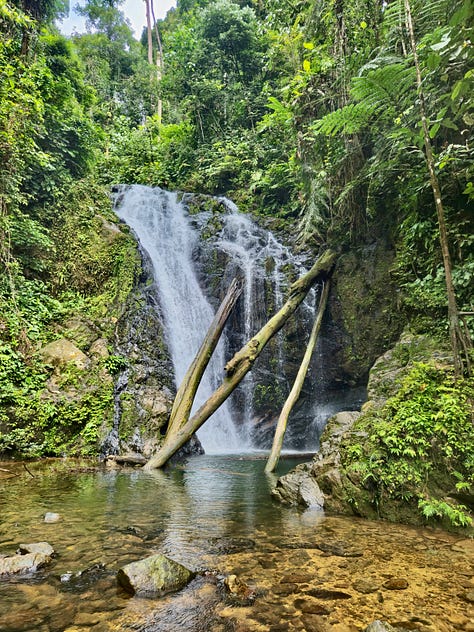

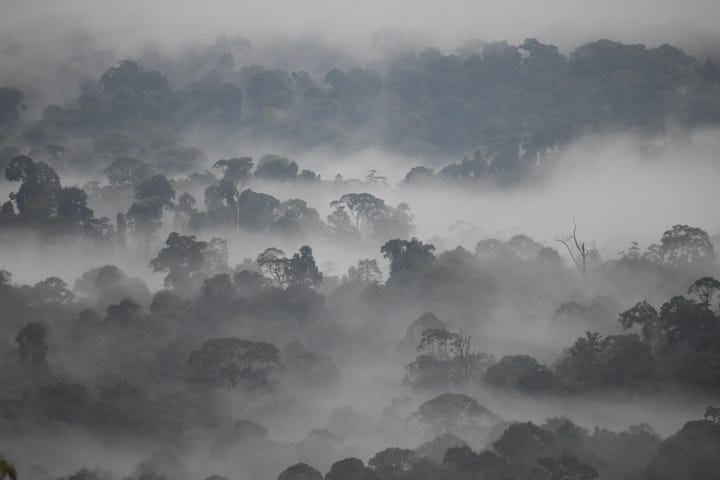
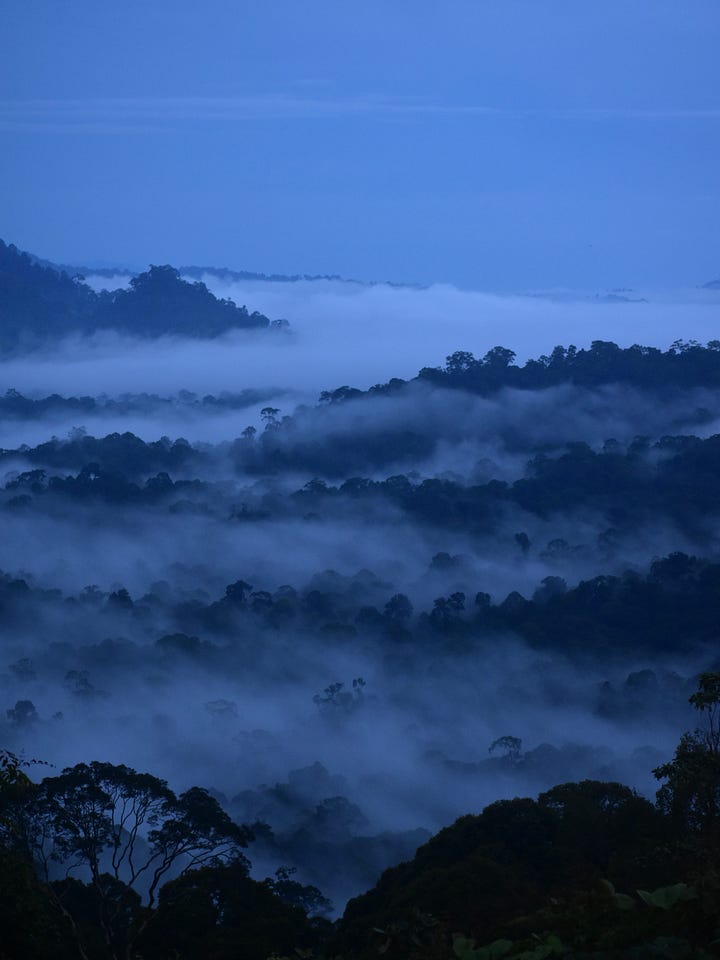
On another hike that we did in the Tawau Hills, we came across giant trees including the world’s tallest tropical tree, a richetia faguetiana standing at about 90 meters tall.
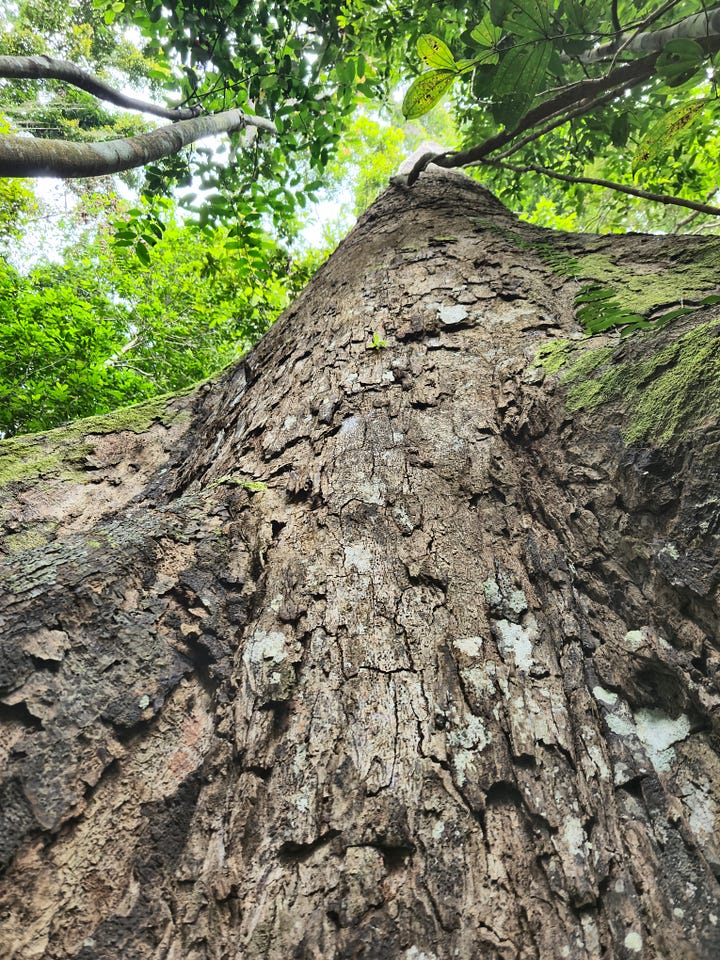

While hiking in Mount Kinabalu National Park, I noticed something red on the forest floor about 10 metres off the trail. To my surprise, it was a rafflesia – the world’s biggest flower — in full bloom. I hopped over the boardwalk railing and waded through the forest towards the big smelly flower (did I mention that the rafflesia is also referred as the “stinking corpse lily”?). Every step I took broke the mass of moisture-laden fallen trees and brush, leaving me to sink a foot or so down to the actual forest floor. A few minutes later, I got to stand over this funky 60cm diameter-wide flower and get some nice pictures. As it turns out, this chance sighting was incredibly lucky since rafflesia take 9 months to bloom and then only remain in bloom for about 6 days before they die!
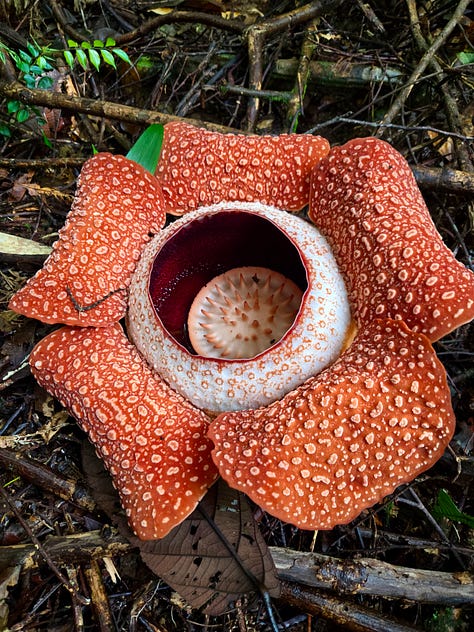
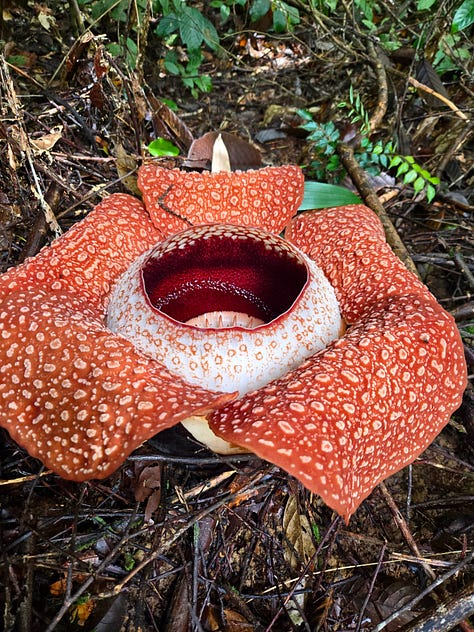
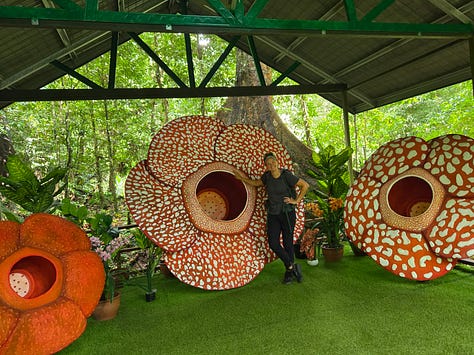
In addition to the humidity, dense foliage, giant trees and stinky flowers, the last thing that struck me during our trips into the rainforest was the ever-present multitude of sounds, which reminds you that you’re certainly not alone out there. As any birder or watcher of wildlife knows, your ears are just as important as your eyes when looking for animals, causing you to focus in on all the other subtle - and not so subtle - sounds: the crackling of ants on rattan branches, leaves falling down through the forest’s canopy (was that caused by a monkey or the wind?!), lizards slithering into the underbrush as you turn a corner…and of course, there's no escaping the constant drone of cicadas!
Funky mammals
Sabah is home to many neat and funky mammals. At the top of list, in my opinion, is the beloved orangutan, which is found only on two islands in Southeast Asia – Borneo and Sumatra. Orangutans are revered in local folklore and traditions and are beloved around the world and it was such a treat to see some while visiting Sabah.
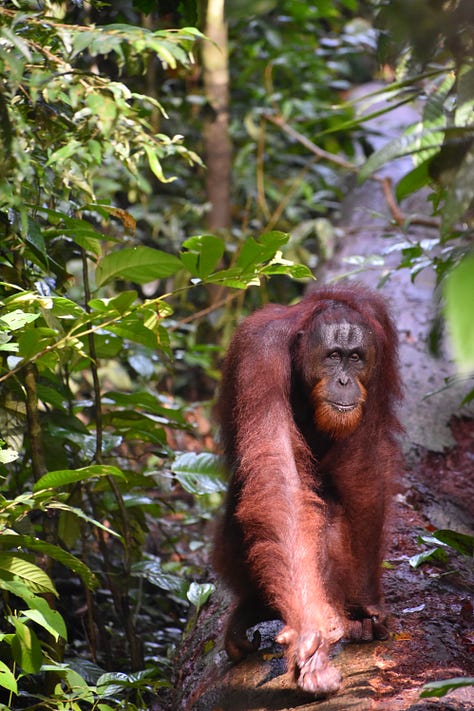
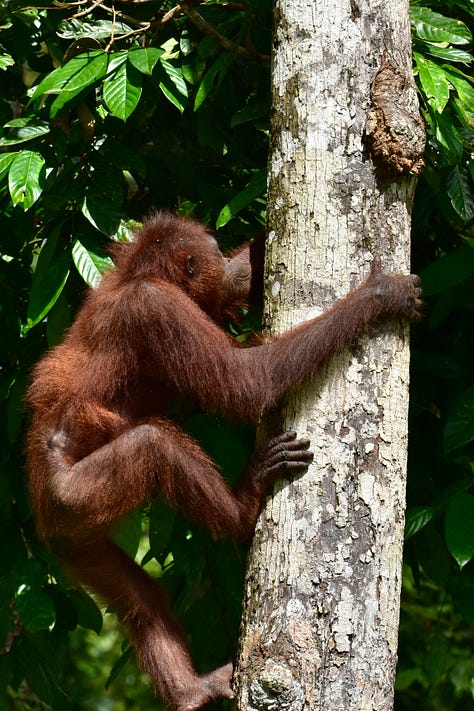

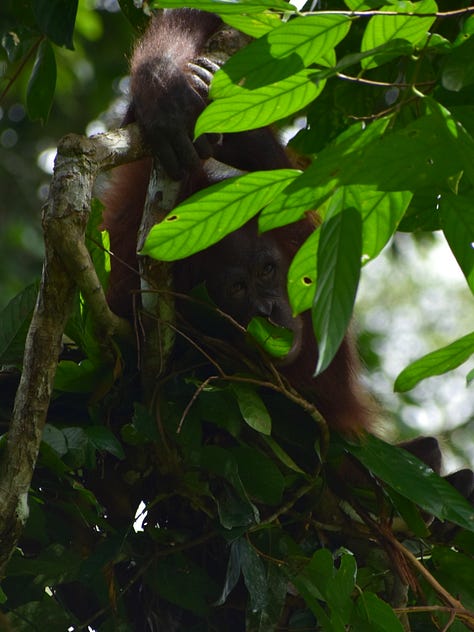
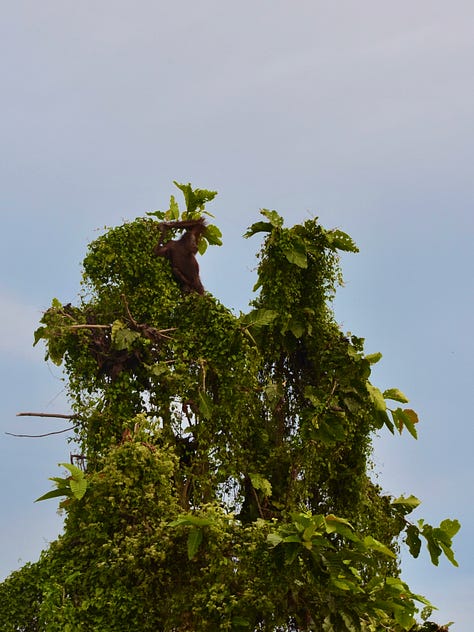
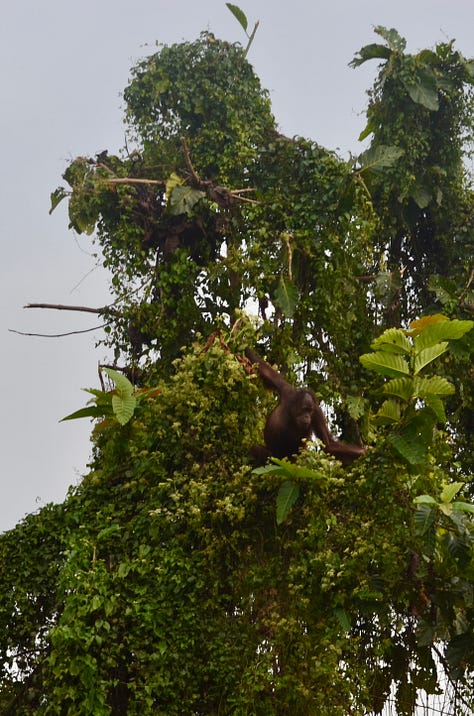
One orangutan sighting was particularly memorable. While taking a boat trip down the Kinabatangan River, we had a up close view of our orange friend making their nest for the night. The reason we were able to get such a good view of this elusive animal (who prefer to spend their time high up in the trees), is because at the time of our visit, there had been a lot of rain that caused the river to flood. Given that orangutans can’t swim, this one in question seemed to be stuck in a grouping of trees surrounded by water, which meant that our boat was able to get closer than it normally would. A stroke of luck for us but perhaps less so for our pal the orangutan!
Another animal that is much more common to spot is the macaque. Macaques are quite common across Sabah and are found in forests, mangroves, and even urban areas looking for food. I, perhaps unjustly, refer to them as the racoons of the jungle. At first it’s exciting to see them but after a while, you start to become disappointed that the rustling of trees isn’t a more uncommon species of monkey. That being said, macaques have quite the entertaining personalities: they are cheeky, curious and probably the source of the expression “monkeying around!”
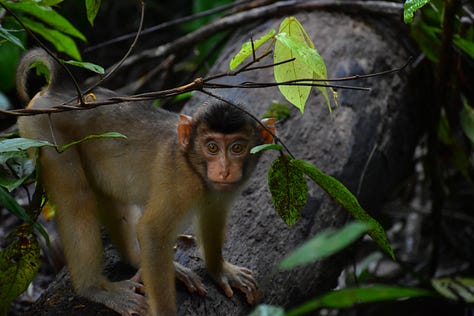
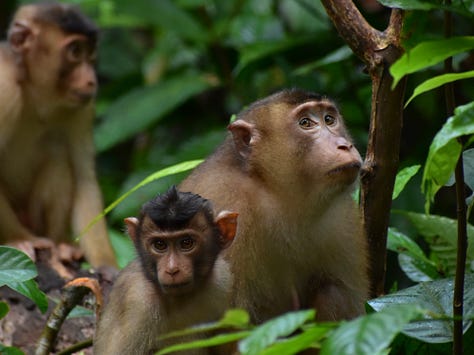
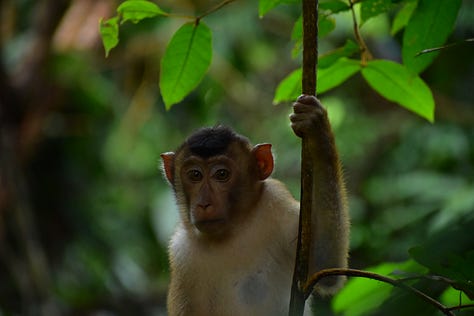
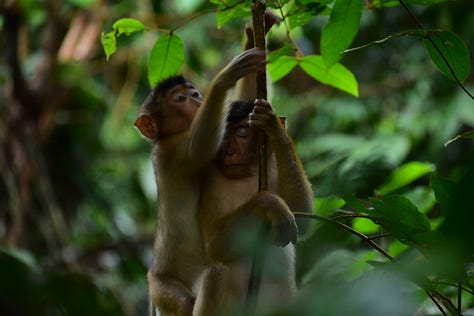

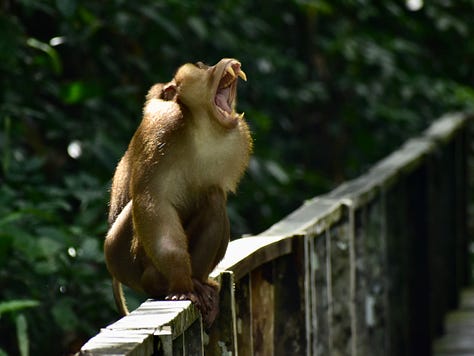

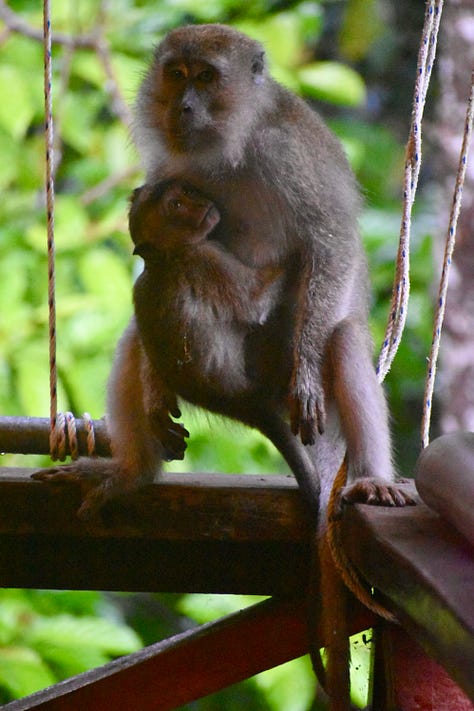
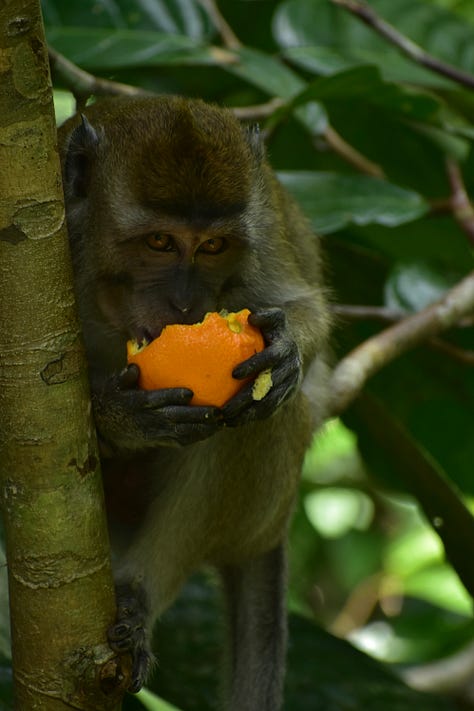
During our many trips into the rainforest, we also had the chance to see some other cool monkeys, notably red leaf monkeys and gibbons. We had a bit more luck seeing red leaf monkeys as they seemed to be more interested in hanging out in shorter trees, whereas the gibbons tend to stick to the higher branches.
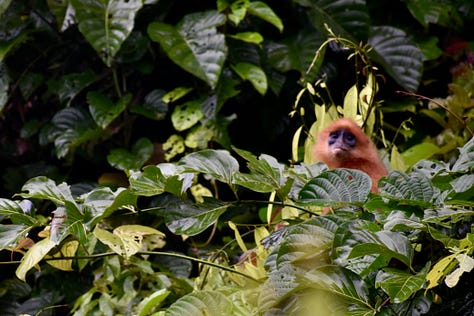
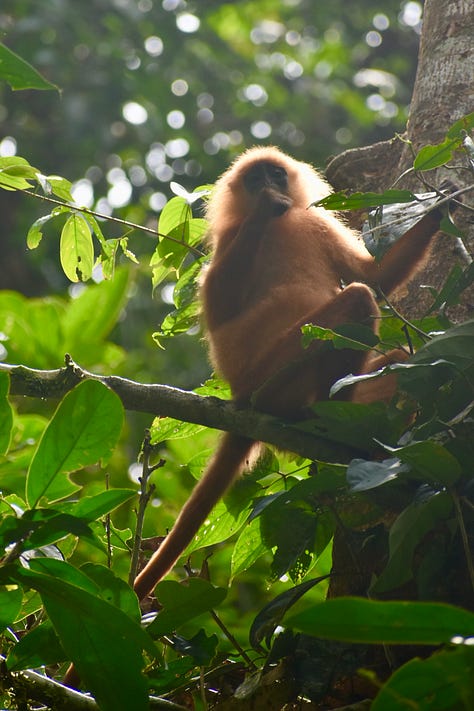
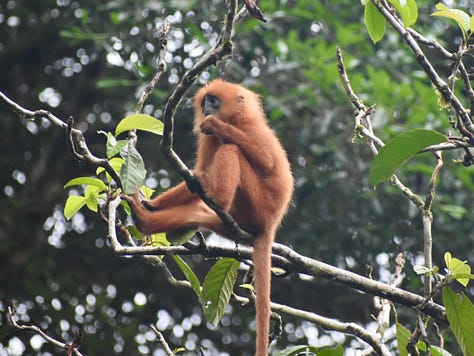
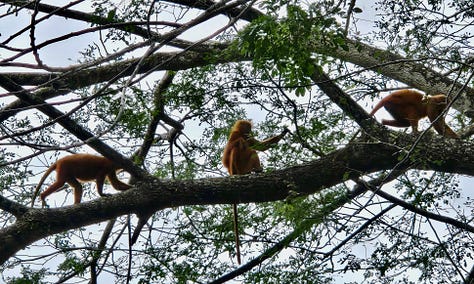
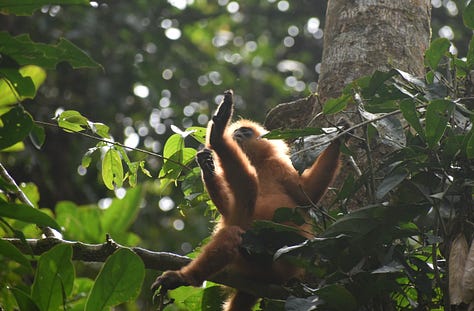
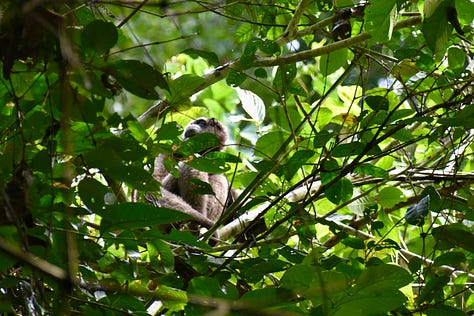
Finally, there were a couple other mammals that we saw that are worth a quick mention. First, sun bears, which are the smallest bear species and have a distinctive orange-yellow crescent-shaped patch on their chests (which is where they get their name). They have long claws to help them climb up trees to find honey, fruits, little animals and all sorts of insects. Their long tongue helps them fetch those tiny bugs from the tree holes it creates. Unfortunately they are also quite endangered and so our sightings were limited to those at a sun bear sanctuary.
The other animal (that is definitely not endangered) were the Sambar deer, which are the biggest deer on Borneo.
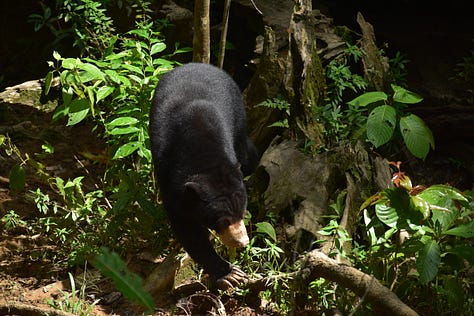

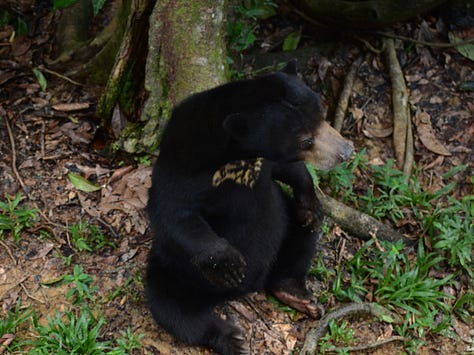
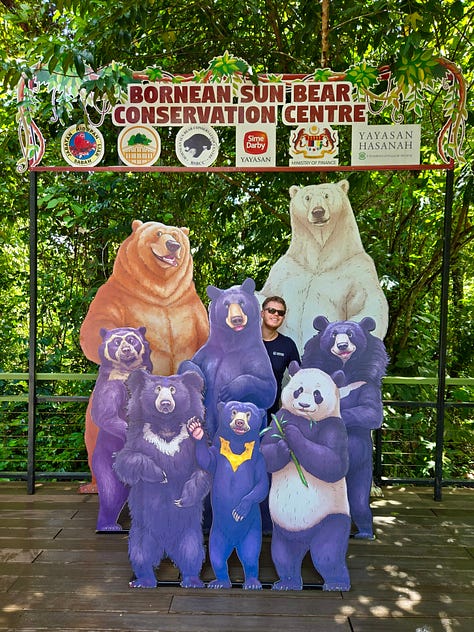
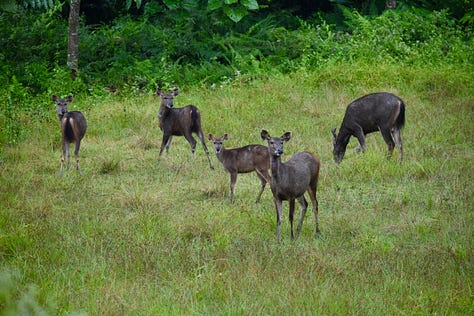
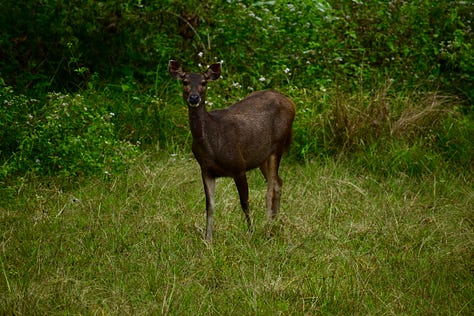
Nifty birds
Coming to Borneo has really re-energized my adoration for birds. In Sabah, I had the chance to see quite the variety of bird species, which has made lugging my lovely - but bulky - binoculars around with me worth it. I have included some of my favourite pictures for your viewing.
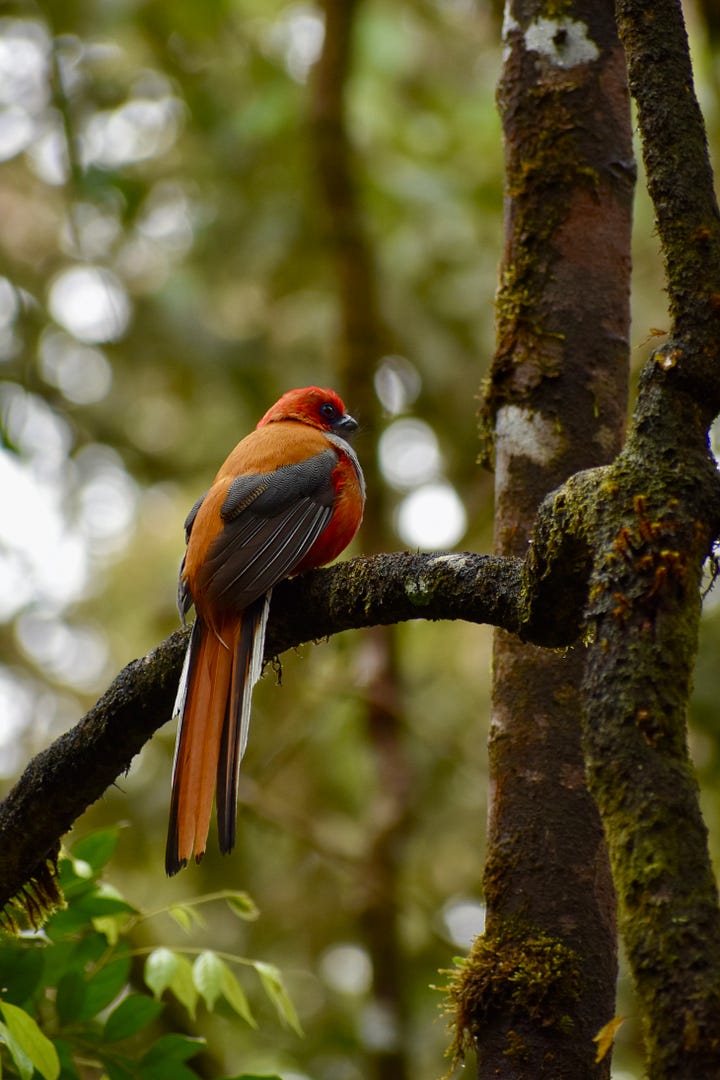
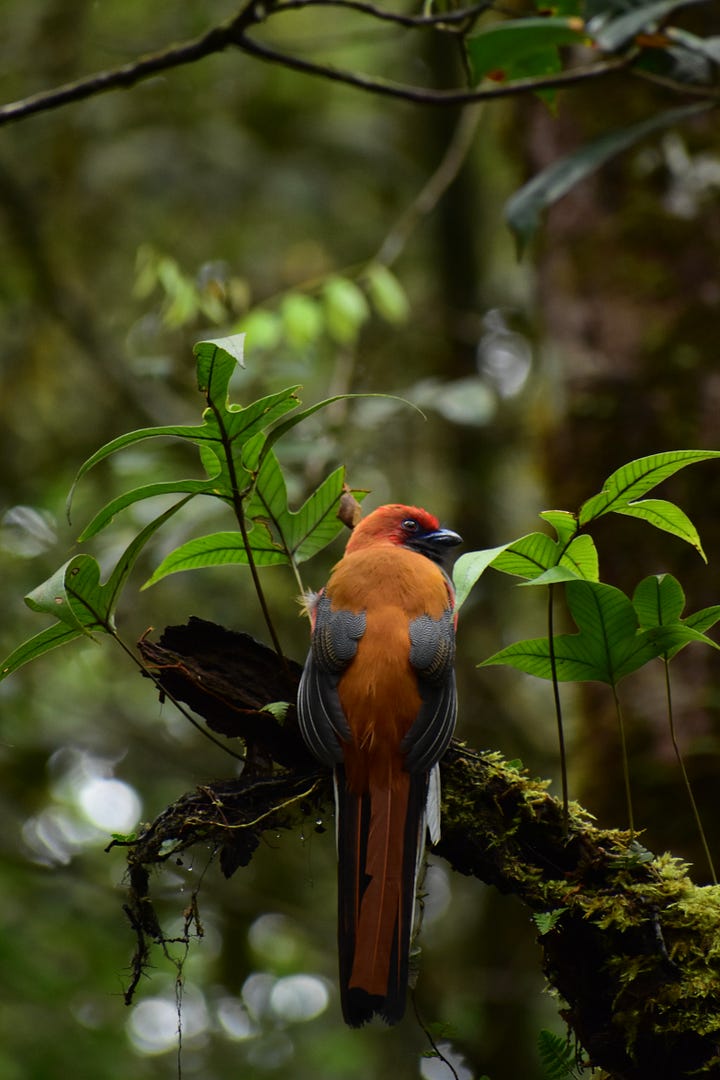

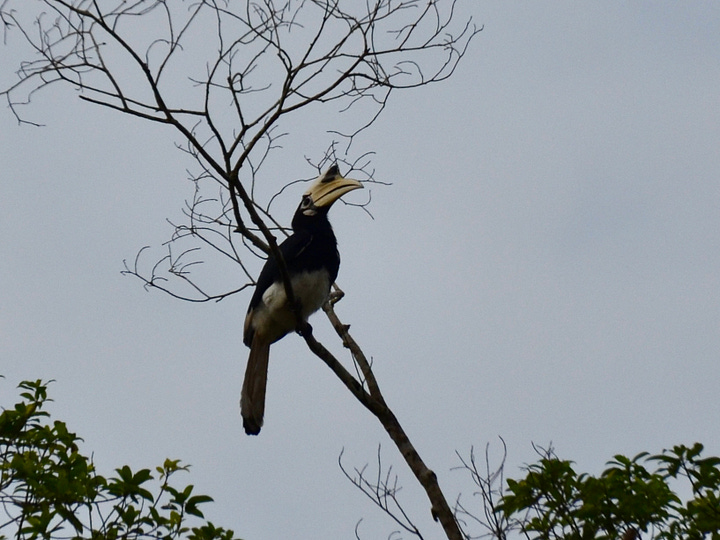
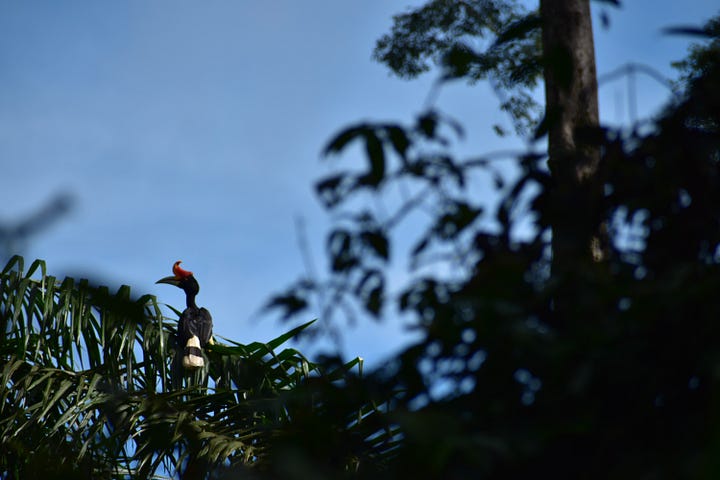
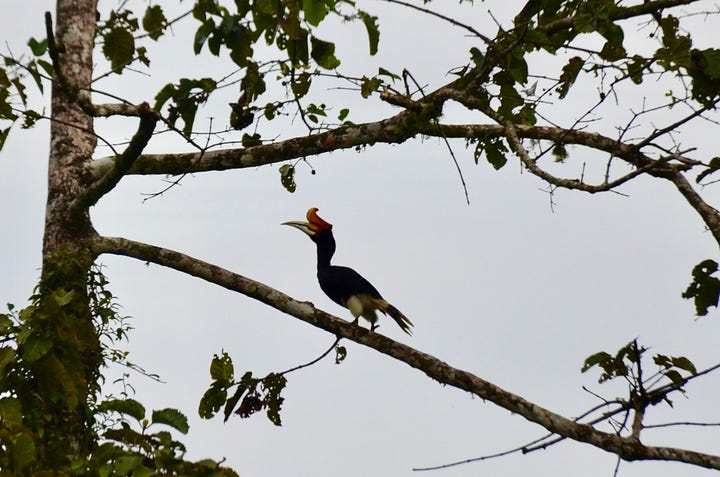

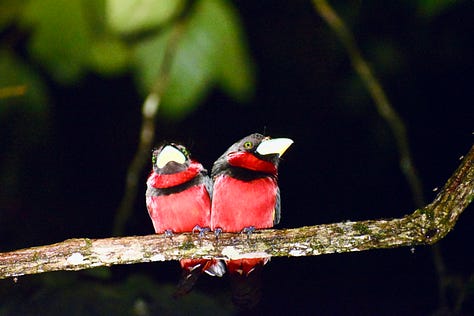

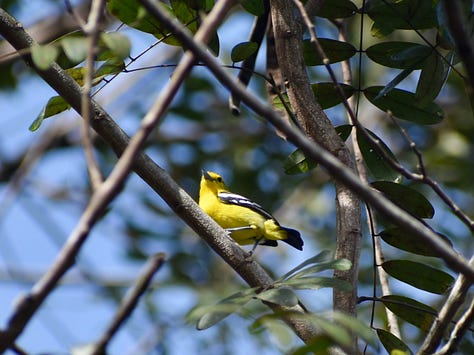
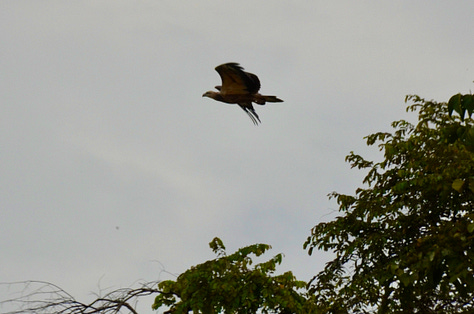
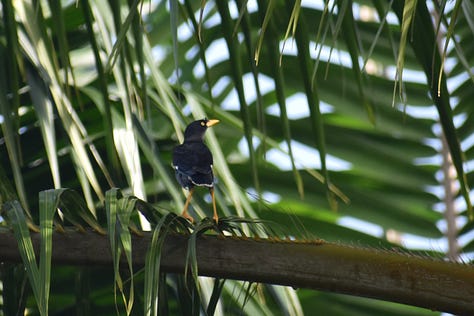
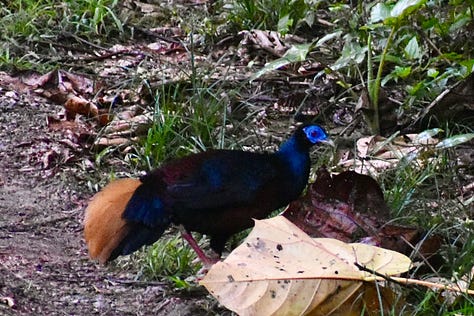
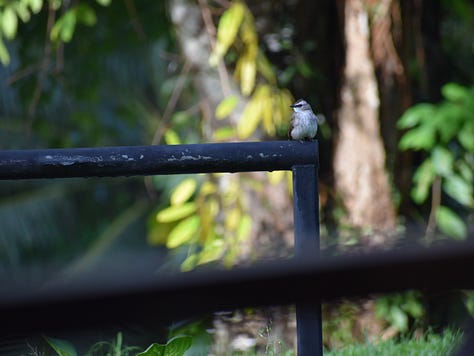
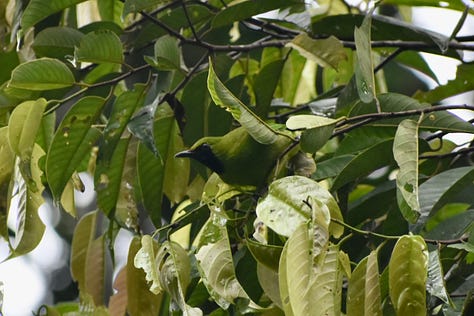
Quirky critters and cold-blooded creatures
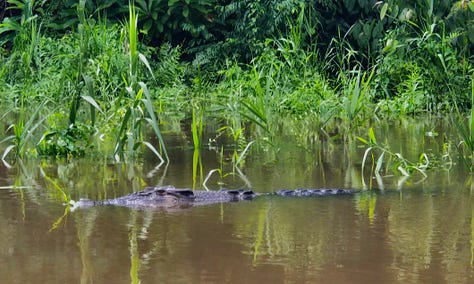
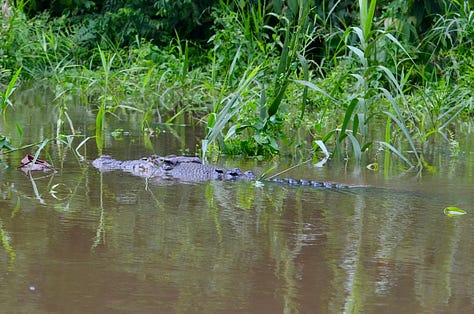
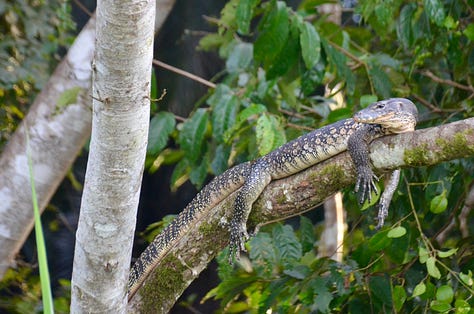
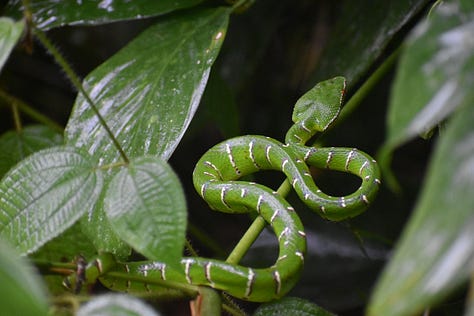

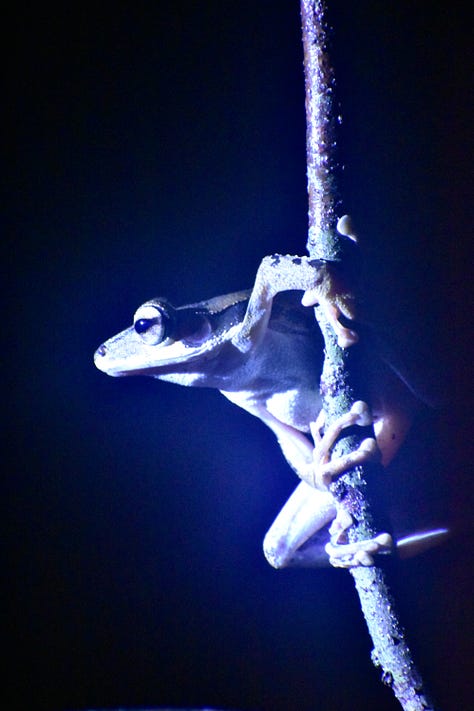
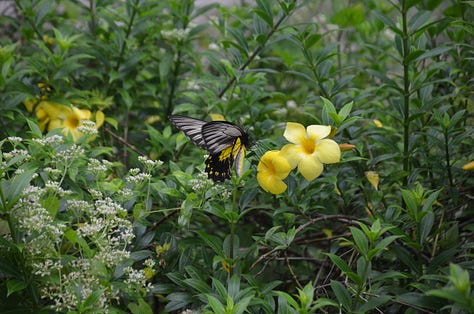
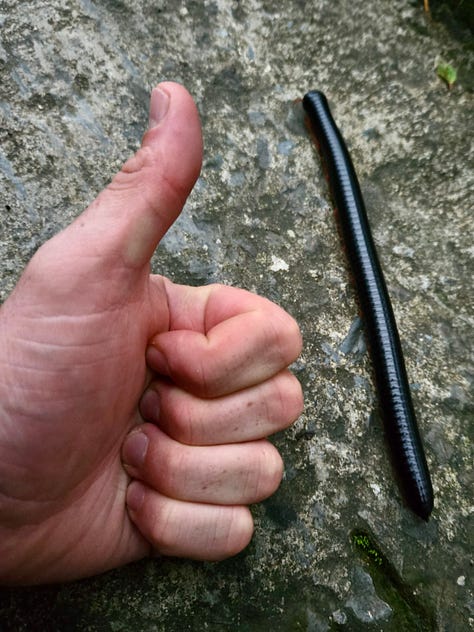
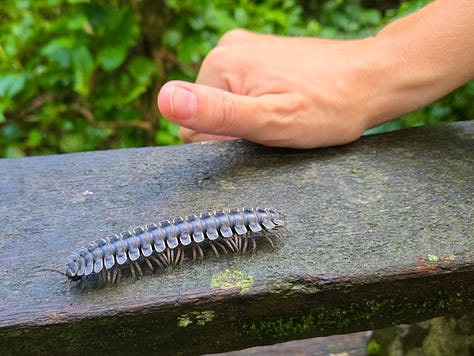
I also thought you might like to see a couple of quick videos of some of the fascinating insects that we came across during the last two weeks. Video 1 is of the Borneo tractor millipede. Video 2 is of the pill millipede.
Last but not leech!
Before going to a large area of protected rainforest called Danum Valley, we were warned that there would be leeches. Now, we didn’t know exactly how many leeches we would see but the literature we read strongly advised to buy a pair leech socks. Neither of us had ever heard of leech socks before and I'm guessing that most of you haven't either. Basically, leech socks are just baggy stockings that you wear over your regular socks/pants in order to provide an additional barrier against leeches. Before going into the rainforest, we both thought these sounded a bit over-the-top/unnecessary but bought some after a store clerk told us that we'd “definitely need them.” We're glad we listened to him!
Fast forward to Danum Valley, we must’ve encountered hundreds of them on our treks! On every walk into the forest, Shannon and I, as well as the 4 others in our group, all ended up having leeches cling on to us. We found them on all sorts of unexpected places (e.g. back, chest, forehead), we found them inside our pant pockets, we found them on the bottom of our feet…no one comes out of the rainforest unscathed!
It was definitely an experience to see how obsessed we became with the leeches (which, in the grand scheme of things, are relatively harmless). Looking back on our time in Danum Valley, I can’t help but smile at how amusing it all was—those few days are something I’ll never forget!
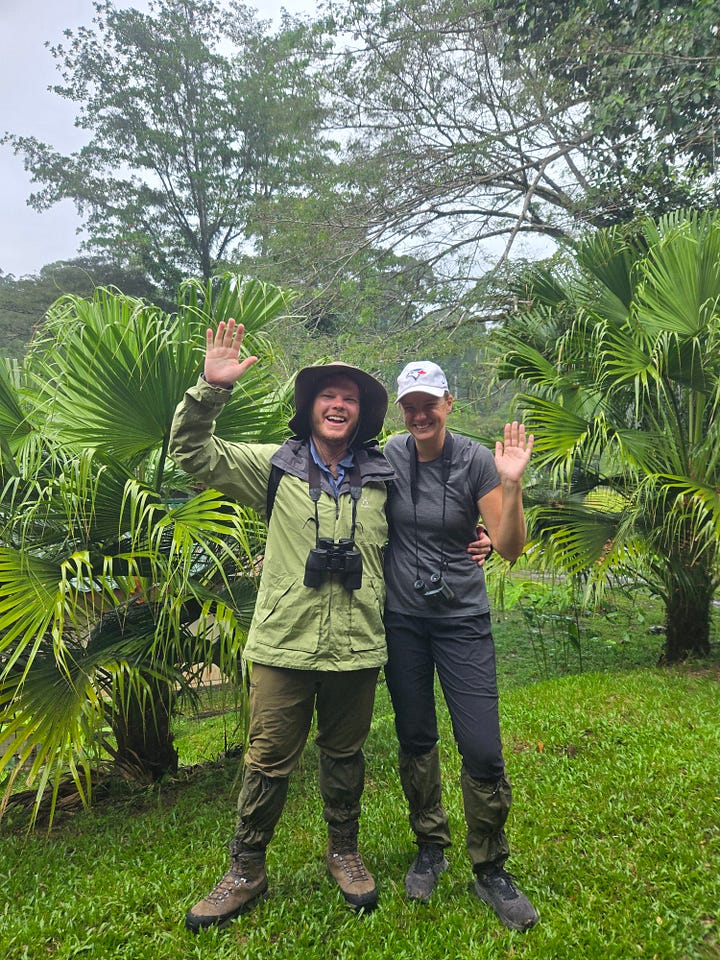
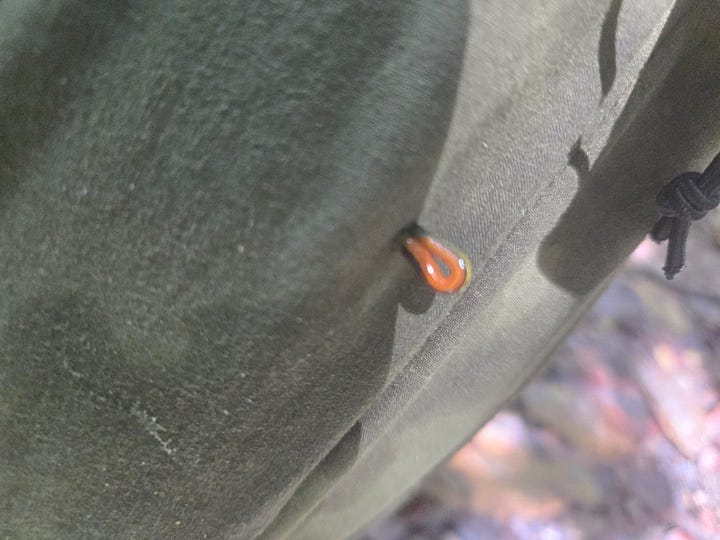
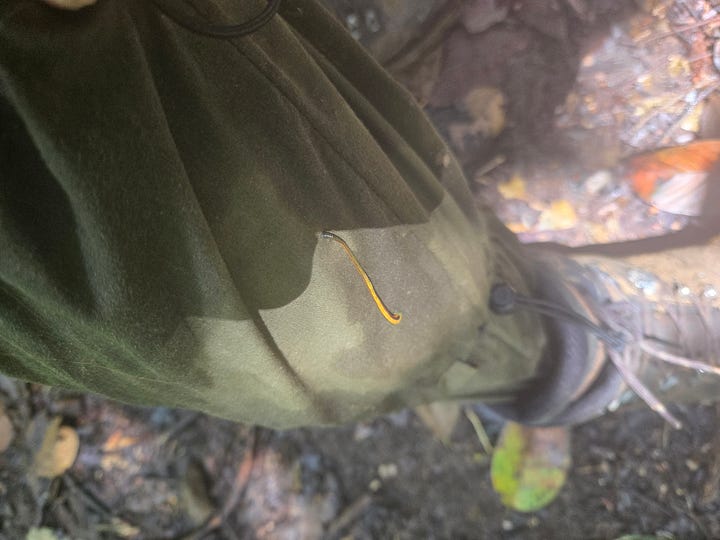
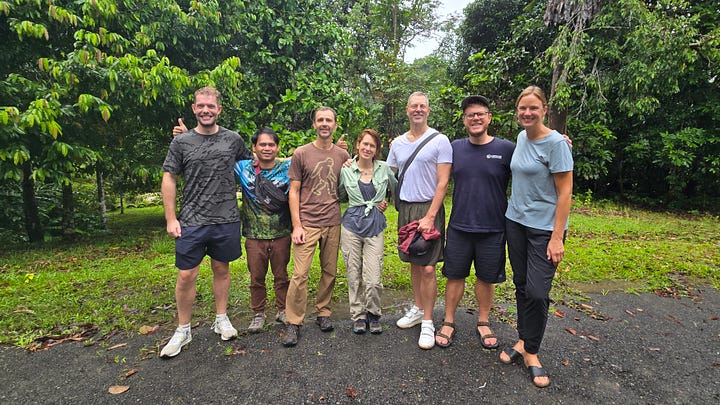
Thank you for reading! I hope you enjoyed our recount from our first half of our trip to Borneo. Feel free to leave a comment, we’d love to hear from you!
Until next time!
André



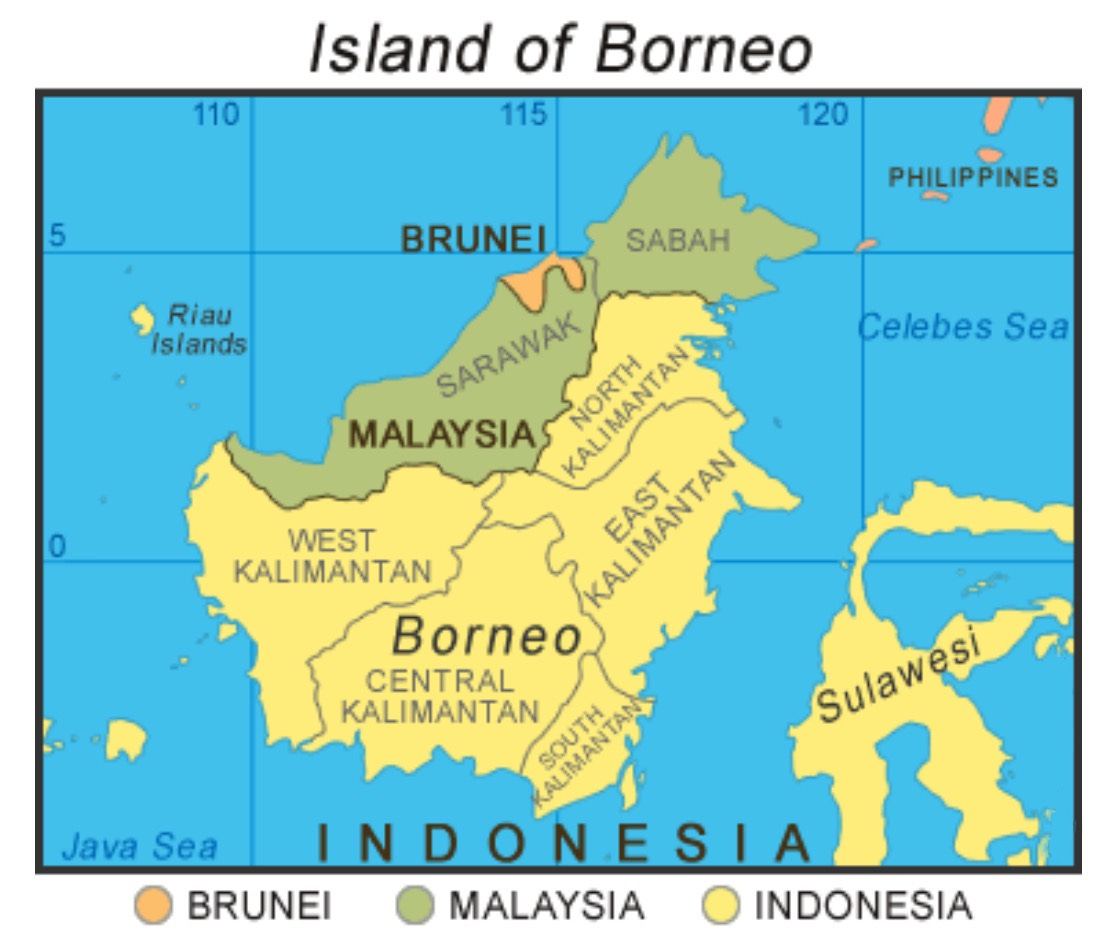
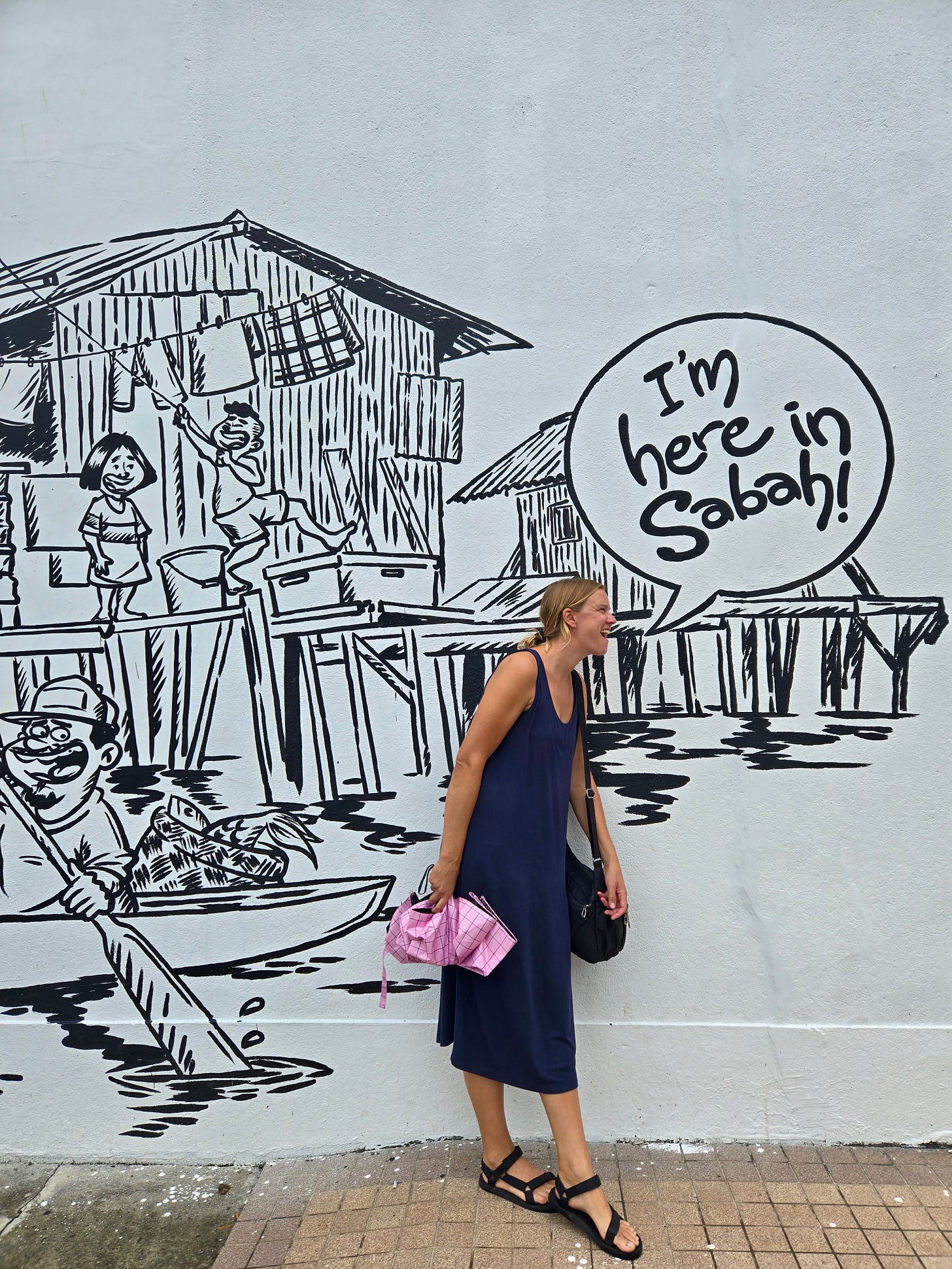
Hi Shannon and André,
I really am enjoying the cultural and geopolítical nature of your blogs. Very pedagogical.
Thank you so much for sharing your adventures.
Denise Jaiko
Borneo looks incredible! Wow am I envious about seeing those orangutang 🦧 out in the wild 😭❤️ loving the south east Asia series so far. And the BIRDS! You’ve got such an eye for wildlife photography!!
What have your accommodations been like? Lots of hostels? Guest houses? Any memorable places you’ve slept?